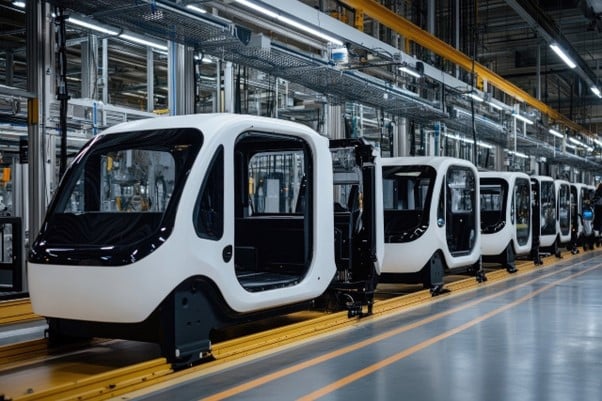Artificial intelligence has already made its way into our daily lives, bringing innovations to the automotive industry. In the United States, autonomous vehicles, which no longer require human drivers, can already be seen on the roads. In this article, we will explore the significance AI brings to this type of vehicle industry.
Autonomous Vehicles
An autonomous vehicle is a transportation device that operates in its environment without human intervention. The Society of Automotive Engineers (SAE) has defined six levels of driving automation, ranging from level 0 – full manual control, to level 5 – fully autonomous vehicles. Currently, self-driving cars are being offered by companies such as Tesla, Uber, Microsoft, and General Motors.
How AI in Self-Driving Cars Transforms Traditional Human-Driven Cars
AI in self-driving cars typically rely on two types of AI algorithms. First is supervised learning. Essentially, it involves machine learning, where the model is pre-trained with data sets. This allows the system to understand requests and make correct decisions. In the automotive industry, this algorithm helps recognize objects such as pedestrians, traffic lights, road signs, or other traffic participants. It also predicts behaviours and models situations, for instance, estimating the likelihood of a pedestrian crossing the street or a vehicle ahead changing lanes.
The second algorithm is unsupervised learning. This operates with unlabelled data sets, enabling self-driving cars to detect anomalies. This means the system can identify risks due to unexpected events and react quickly, for example, if a pedestrian suddenly runs into the road.
Additionally, unsupervised learning involves clustering, allowing the technology to comprehend and resolve complex driving situations. Finally, this algorithm enables the identification of key elements from the data gathered by the car’s sensors.
Several areas benefit from AI in self-driving cars, enhancing automobiles and enabling autonomous driving. First, predictive modeling. In this process, the vehicle considers and identifies real-time situations or potential threats, such as evaluating the actions of nearby automobiles or predicting pedestrian behaviour.
Second, AI enables vehicles to assess the environment and make decisions based on that data. Cameras, sensors, radar, and other integrated systems provide real-time information, allowing the automobile to evaluate and strategize the driving process. In general, the central computer in a self-driving vehicle collects data from these tools and makes decisions accordingly.
Third, natural language processing allows interaction with passengers. Using this technology, a vehicle can understand map commands, detect road obstacles, and avoid threats. Based on previous journeys, AI can also select the best routes to reach a destination.
One of the key aspects of AI technology is the ability to operate in real time. This means that information is instantly processed, and decisions are made immediately, enabling the autonomous vehicle to react to situations without delay.
It is believed that AI in self-driving cars will improve road safety by reducing human errors, alleviate traffic congestion, provide increased mobility for vulnerable groups, and reduce environmental impact. However, several challenges remain, particularly regarding various risks. For instance, the system works best in clear weather when sensors are most sensitive, but challenges can arise in adverse weather conditions such as fog or rain.
Additionally, there are ongoing debates about the safety of autonomous vehicles, especially after several fatal accidents involving Tesla’s autopilot feature. Looking to the future, the use of such smart technologies may pose cybersecurity risks, as these systems could potentially be compromised by cyberattacks.
Final Word
AI in self-driving cars represent significant progress and opportunities in the automotive industry. Once certain challenges are addressed and risks are minimized, these vehicles will become a revolutionary breakthrough.
If you are interested in this topic, we suggest you to check our articles:
Sources: Appinventiv, IoT For All, Simply Feet, Synopsys, Yosha Law

